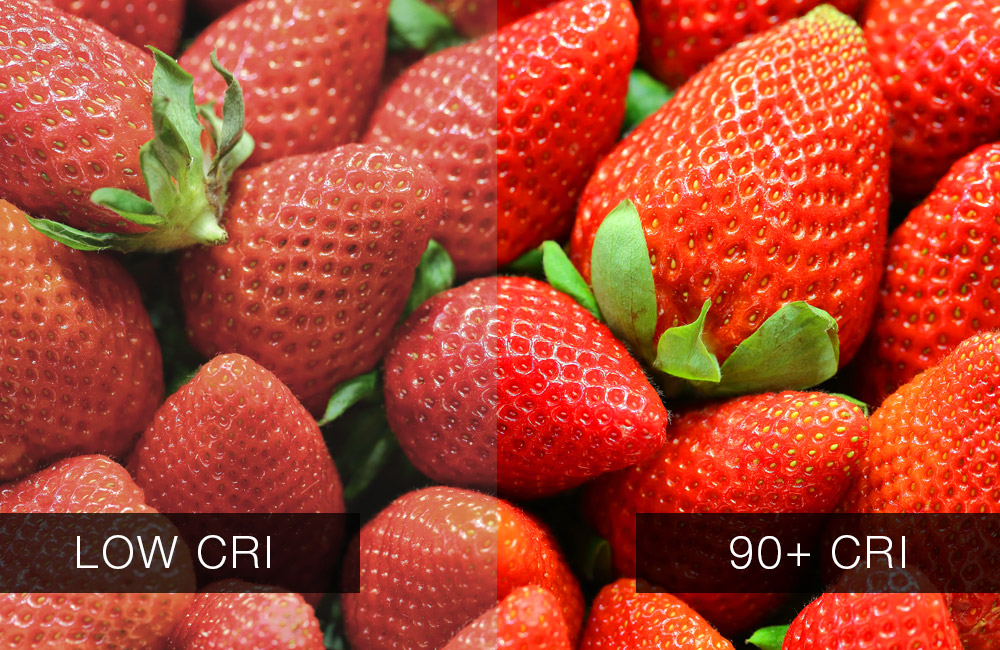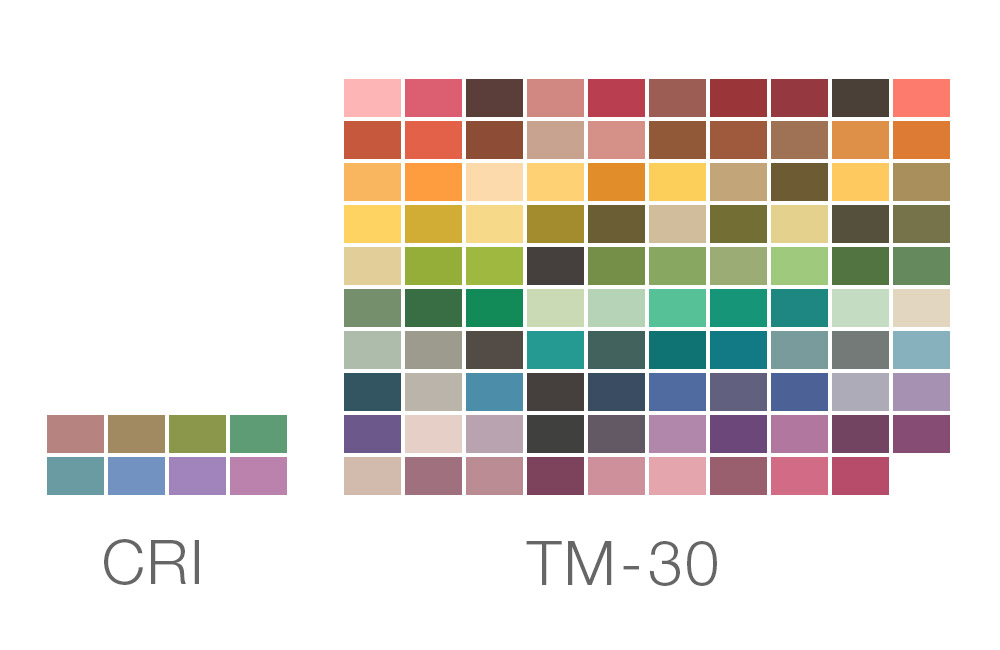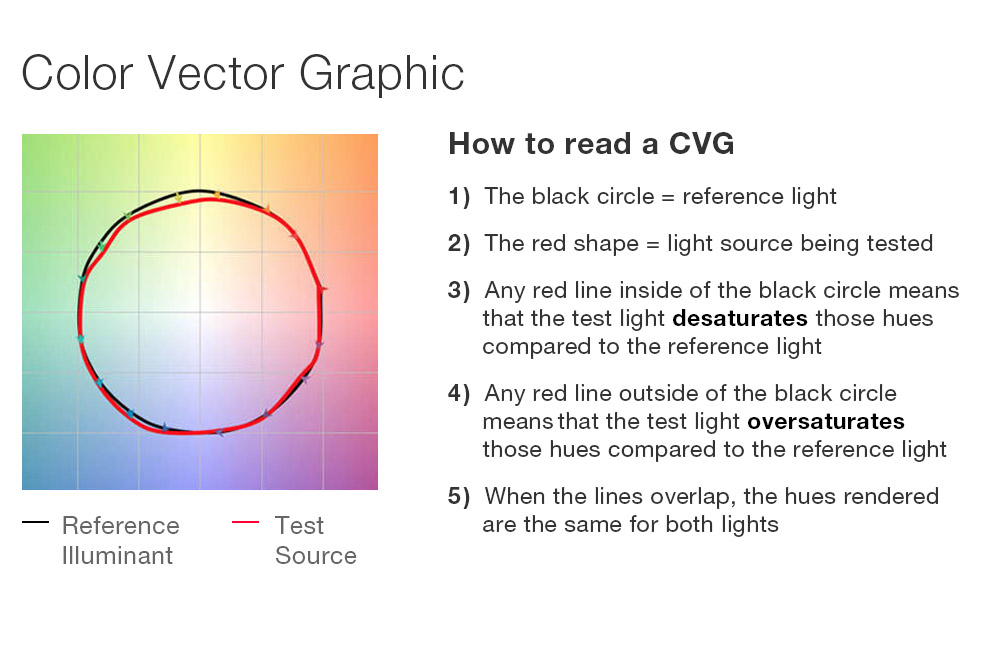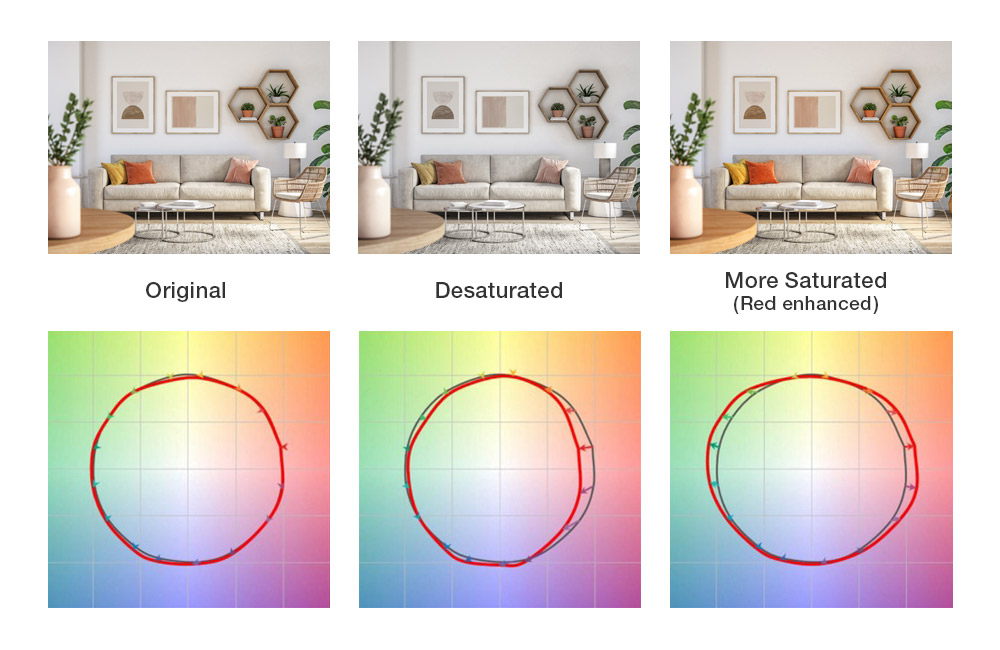
What is CRI?
Developed well over 50 years ago, Color Rendering Index (CRI) measures the ability of a light source to reveal the colors of various objects in comparison to the ideal (daylight) source. In other words, how similar an electronic light source (like an LED luminaire) renders colors compared to natural light.

CRI indexes eight standard colors and how these are represented by a specific light source compared to natural daylight. 100 is the optimal ‘best’ score. The average CRI for modern LED lighting is between 80 – 90, and are considered a “good” color representation, relatively true to nature.
Why a New Metric?
Well, since around 1974 the method for measuring color rendering has been largely unchanged – unlike the advancement of lighting and technology. With LED lighting now so common, lighting designers and scientists strongly feel CRI is becoming less effective at achieving desired results in the real world. While many lighting professionals will continue to work with CRI, TM-30, developed in 2015 by the Illumination Engineering Society (IES), provides an alternative, more comprehensive color index. 
What’s the Difference Between CRI and TM-30?
CRI has some limitations:
- Only eight color samples are tested for CRI.
- CRI only uses color fidelity to base its index score, ignoring other spectral values.
- When comparing CRI values, Correlated Color Temperature (CCT) must be identical.
- Two separate light sources with the same CRI score can render colors very differently.
- A high CRI measured rating could produce or represent a low TM-30 score.
CRI measures just 8 color samples. TM-30 uses 99 color samples – quite a difference! The use of 99 color samples versus just eight allows for a more statistically representative and reliable metric.
CRI is measured using a light fidelity metric ONLY. The TM-30 rendering index uses a more comprehensive range of three color metrics:
- Color Fidelity (Rf – “same-ness” index)
- Color Gamut (Rg – saturation index)
- Gamut Shape (visual description on hue and saturation)
Color Fidelity: Enumerates the accuracy with which the color appearance of surfaces and objects under a given test source match their appearance under a reference illuminant.
Color Gamut: Enumerates the average increase or decrease of the chroma of surfaces and objects when viewed under a given test source relative to when viewed under a reference illuminant. As an example, an Rg value below 100 indicates that, on average, the light source renders colors as less saturated than the reference source, and an Rg value above 100 indicates that, on average, the light source renders colors as more saturated than the reference source.
Color Vector Graphic: Provides a visual representation of hue and saturation changes occurring in surfaces and objects when viewed under a given test source relative to when viewed under a reference illuminant. The addition of the Color Vector Graphic provides a wealth of color rendering information beyond averages, showing us at a glance exactly where the hue and saturation shifts are taking place on the color spectrum.

A Better Way to Measure Color Accuracy
With TM-30, a light source can be measured using both fidelity and gamut, together these provide the preferred or intended outcome for many designers and those considering lighting for specific areas.
The advantages of TM-30 really come into play when representing specific items or products – say, in a retail or fashion environment. A CRI score might be high, but that doesn’t mean it’s ideally suited for certain colors, in certain environments, or for the desired look & feel. This is where a vector graphic helps a user choose the right lighting for a given situation based on the colors they wish to accentuate.

While there’s no single “best” TM-30 score, you’d see near-perfect overlapping on a color vector graphic – ideal when you need to mimic natural sunlight.
The Future of Color Rendition – the Standard?
TM-30 was introduced with the intention to provide a new way of measuring light fidelity and help users analyze the color characteristics of both modern and traditional solid-state light sources. This brings greater fairness and accuracy of the measurement.
As an improved and more comprehensive color metric, we can see its value for those who need more accurate detail to measure the color representation of several light sources.
With CRI, it seemed simple, a higher CRI score = better, more accurate color representation for a given light source. However, TM-30 provides users/designers with more information, critical to making informed decisions for the optimal light source.
At DMF, we continue to explore TM-30 results as a tool to develop new sources, further increasing options for both designers and end users, and can provide TM-30 results for any product upon request.
Focused on innovative quality – we continue to turn decades of R&D performance into the elegant luminaries of the future.
Learn more about TM-30:
Department of Energy FAQs
– – – – – – – –
Connect on LinkedIn, Instagram, Facebook, or Twitter to stay up to date with everything that’s happening at DMF Lighting.
